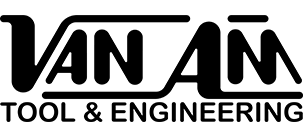Five-axis lasers are the latest technological advancement in laser cutting, and they are revolutionizing the way things are made. With their advanced capabilities, five-axis lasers can cut more complex shapes, faster and more accurately than ever before. In this blog post, we will explore the amazing power of five-axis lasers and discover how they can make production easier and more efficient. Read on to learn more about the incredible capabilities of five-axis lasers!
What is a five-axis laser?
A five-axis laser is an advanced cutting machine that uses lasers to cut, engrave, and mark a variety of materials. This type of laser cutter is capable of performing 3D machining operations and can work on large workpieces. It is one of the most advanced and efficient laser machines available today, as it can handle a wide variety of materials, from metal to plastic and wood.
A five-axis laser consists of a cutting head, a control system, and an associated software package. The cutting head contains the laser source, optics, and beam delivery system, while the control system is responsible for the movement of the cutting head. The software allows the user to create and store programs for cutting tasks. The laser source generates light which is then focused into a narrow beam. This beam is directed through the optics and onto the workpiece. The resulting beam is so precise that it can create very intricate patterns and shapes on the material. This makes it ideal for high-precision cutting operations. Additionally, the five-axis laser has an advantage over traditional machines in that it can process both large and small objects with equal accuracy.
What can five-axis lasers do?
Five-axis lasers are incredibly powerful and capable machines. They can do a variety of tasks including cutting, engraving, drilling, welding, and marking. These lasers are much more precise than other tools such as CNC mills or plasma cutters, allowing them to work on very fine details with accuracy. Additionally, five-axis lasers have the ability to manipulate materials in three dimensions which gives them the capability to create complex parts and shapes.
These lasers are also highly efficient, able to quickly cut through thick metals and other materials with ease. This makes them ideal for industries that require fast production times, such as the automotive industry. With the right setup, these machines can even be automated to save time and resources.
When compared to other machines, five-axis lasers provide superior accuracy and speed, making them the perfect choice for projects requiring precision and quick turnaround times. Moreover, these lasers are safer than other machines as they are less likely to cause dangerous sparks when used. This makes them ideal for working with flammable materials or in areas with high safety risks.
How does a five-axis laser work?
A five-axis laser works by combining two or more axes of motion together to create a single laser beam. This enables it to move in multiple directions and provide greater flexibility than a traditional three-axis machine. The most common type of five-axis laser is the three-dimensional (3D) laser, which has five axes of motion: x-axis, y-axis, z-axis, theta axis, and phi axis.
The x-axis is responsible for moving the laser beam along the horizontal plane, while the y-axis moves the beam along the vertical plane. The z-axis moves the laser up and down in the vertical direction. The theta axis rotates the beam along its own axis, while the phi axis causes it to rotate around an external axis. By controlling these axes, users can create complex shapes that would not be possible with a standard three-axis laser.
Using a five-axis laser is relatively simple. First, a user will need to select the desired shape they want to cut out and load the file into the machine. Then, they will need to set the parameters of the five axes and how they will interact with each other. Finally, they can hit start and watch as the laser starts to cut the shape out of their material. With a five-axis laser, intricate shapes and details can be created quickly and with precision.
What are the benefits of using a five-axis laser?
The five-axis laser offers a range of advantages that make it an attractive choice for industrial applications. For starters, the five-axis laser allows for greater precision and accuracy in cutting, welding, and engraving. The use of multiple axes increases the possibilities for the types of shapes and cuts achievable with a single machine. Additionally, the five-axis laser is able to produce components that are up to three times faster than those created with traditional cutting or welding processes. The five-axis laser can also be used to create intricate components that would otherwise be difficult or impossible to make with traditional methods. The five-axis laser also offers greater flexibility and scalability, as it can be easily integrated into existing production lines and automated processes. Finally, the five-axis laser is relatively low maintenance, making it a cost-effective solution for industrial applications.
